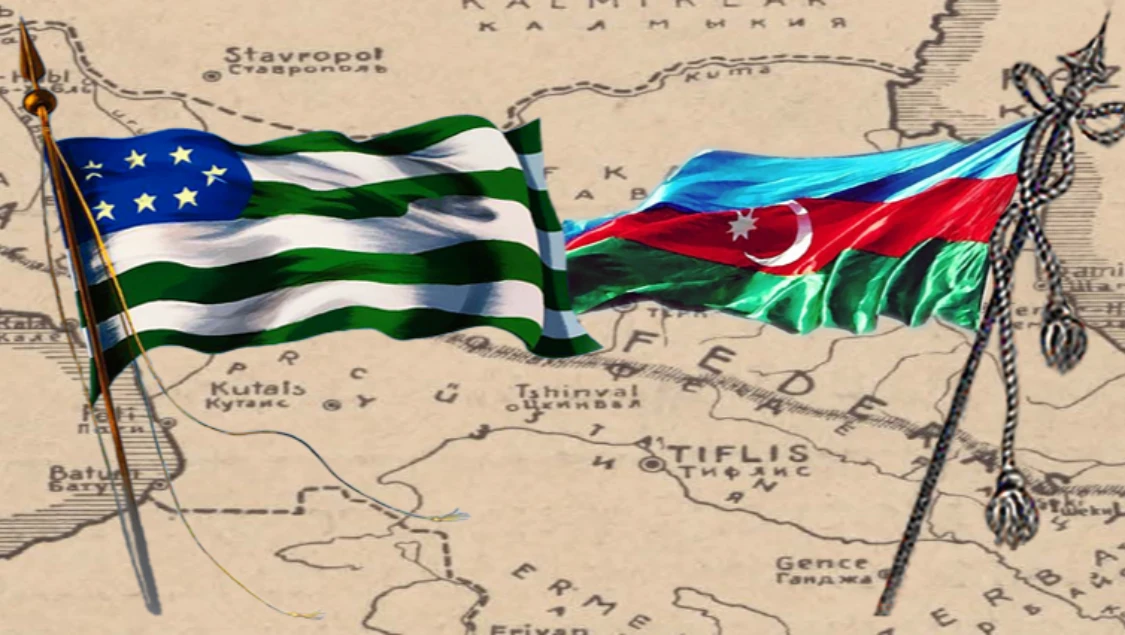 In April 1918, the call of the delegation of the Union of United Mountaineers of the Caucasus for unity with the Trans-Caucasus in Trabzon did not find supporters on the Trans-Caucasian side. The attempt for a Trans-Caucasian Federal Republic failed and Baku was occupied by the Bolshevik-Armenian-British alliance. Georgians and Germans blocked the Trans-Caucasian railways to prevent the Caucasian Islamic Army from delivering military assistance to Azerbaijan and Dagestan. The conditions for the Muslim people in Baku were getting worse day by day. Under such circumstances, Azerbaijan responded to the call of the North Caucasus delegation and proposed a draft agreement for unification.
In April 1918, the call of the delegation of the Union of United Mountaineers of the Caucasus for unity with the Trans-Caucasus in Trabzon did not find supporters on the Trans-Caucasian side. The attempt for a Trans-Caucasian Federal Republic failed and Baku was occupied by the Bolshevik-Armenian-British alliance. Georgians and Germans blocked the Trans-Caucasian railways to prevent the Caucasian Islamic Army from delivering military assistance to Azerbaijan and Dagestan. The conditions for the Muslim people in Baku were getting worse day by day. Under such circumstances, Azerbaijan responded to the call of the North Caucasus delegation and proposed a draft agreement for unification.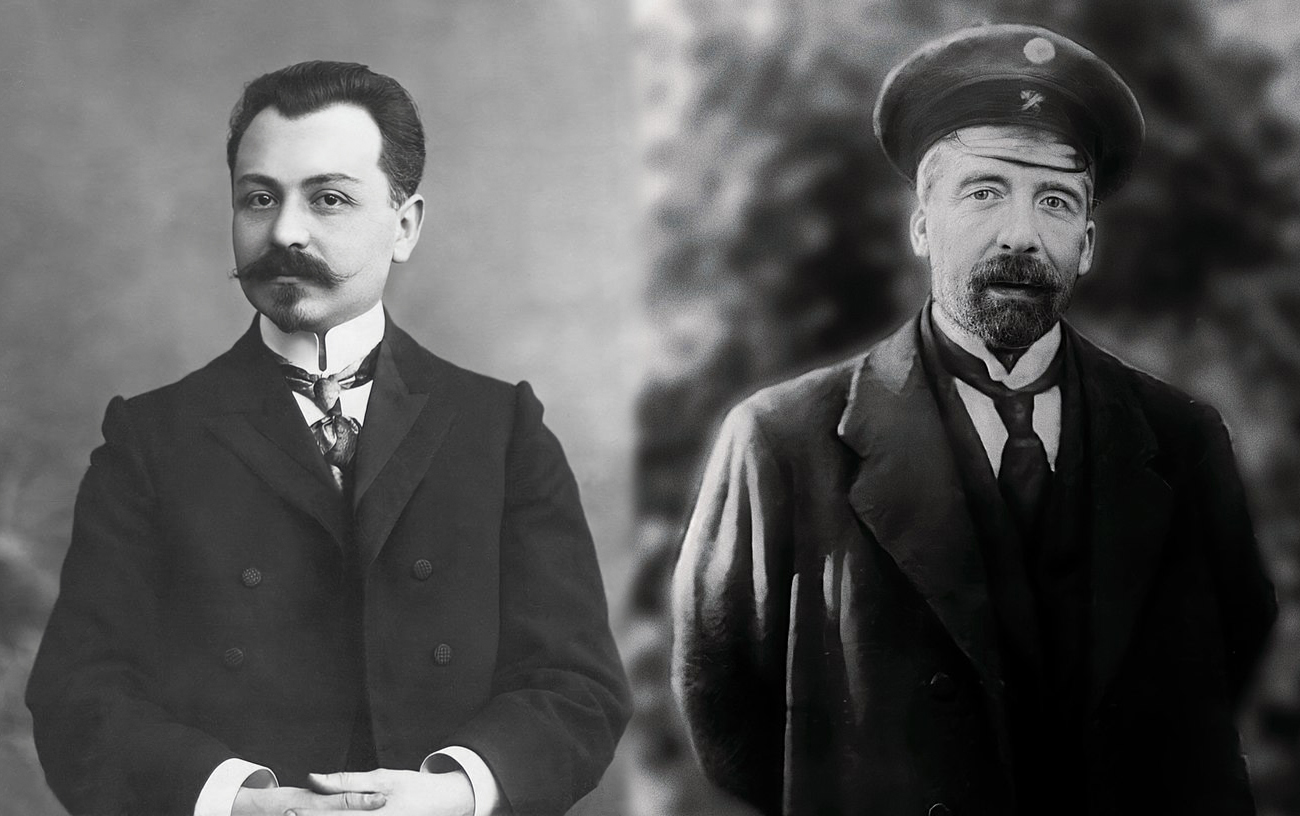
(Click the image for a larger view)
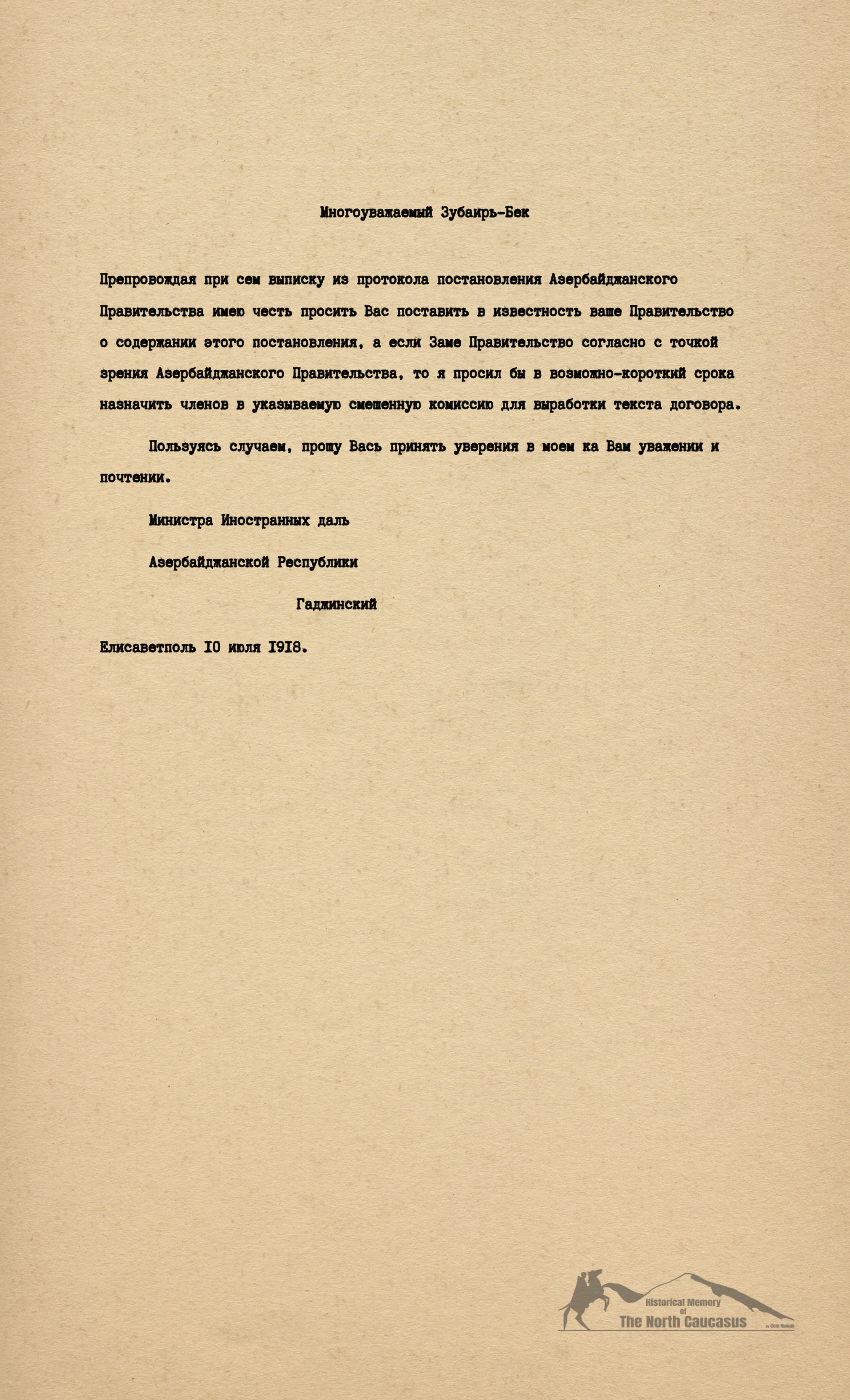
EXTRACT FROM THE MINUTES OF THE MEETING OF THE AZERBAIJANI GOVERNMENT FROM THE 9th JULY, 1918
Listened:
Report of the Minister of Foreign Affairs on the alliance with the Union of United Mountaineers of the Caucasus.
Resolved:
Recognize the soonest possible unification of the Government of Azerbaijan and the Union of United Mountaineers of the Caucasus as desirable,
In the meantime, to begin to implement the unification of four fields outlined in the report: a) the armed forces, b) foreign policy, c) spiritual affairs, and d) finances related to the above issues.
- Simultaneously with the conclusion of an agreement on the above issues, to establish and document with a special addition: a) the relationship of the union of both Governments to Turkey on issues “a” and “b” of Article 2 and b) the external borders of both states.
- To edit the treaty and to develop a detailed Constitution of the Union, elect a special composite commission.”
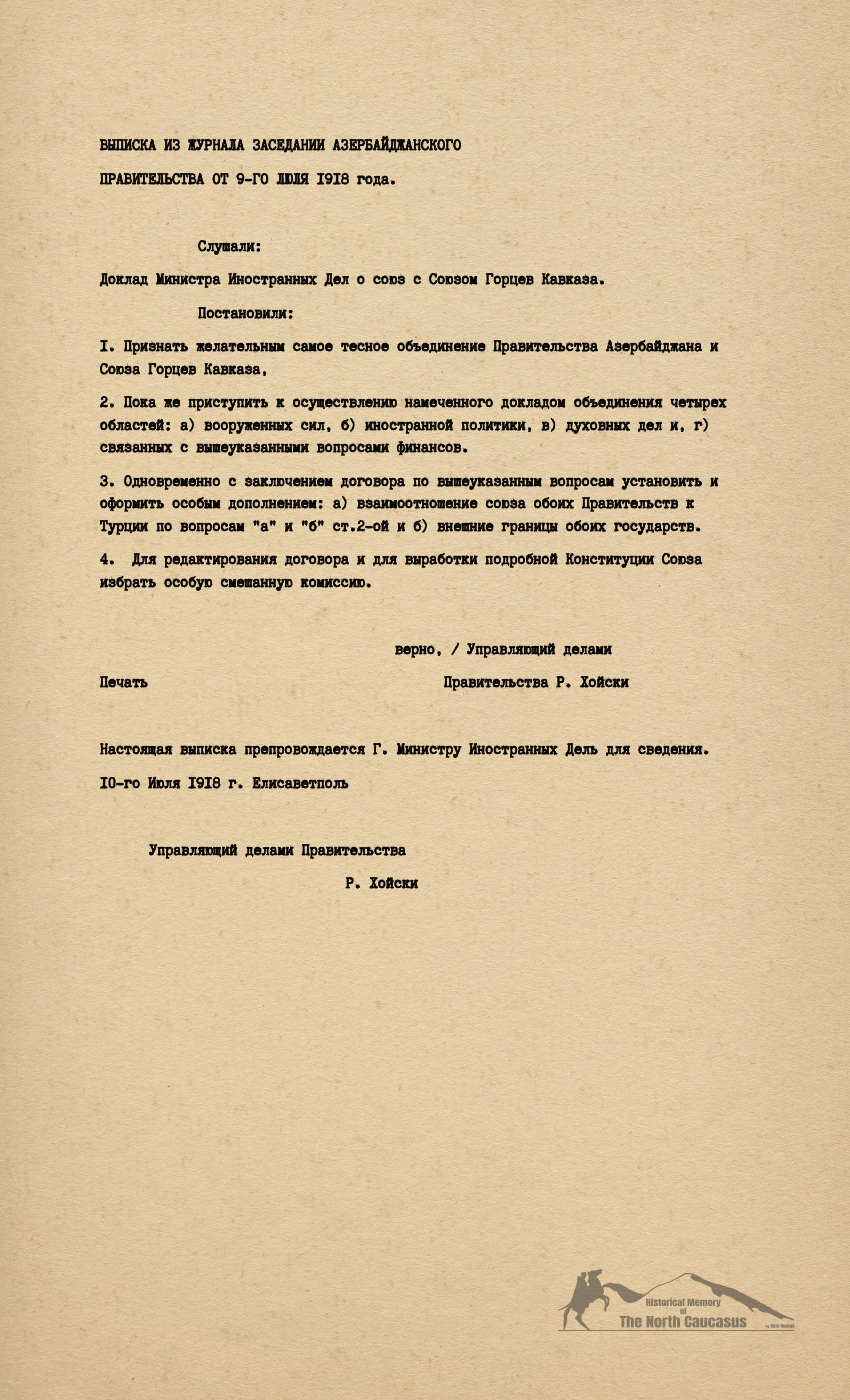
Union Treaty between the Governments of the Republic of Azerbaijan and the Union of United Mountaineers of the Caucasus The Government of the Republic of Azerbaijan on the one hand and the Government of the Republic of the Union of United Mountaineers of the Caucasus on the other, recognizing the strong ties of the peoples of both Republics with each other, co-religionism, culture, customs of the historical past, as well as for strategic, economic and political reasons,
“DECIDED:
To reunite these two Republics on the following basic principles.
Art.1
A permanent, strong alliance is established between the Government of the Republics of the Union of United Mountaineers of the Caucasus and Azerbaijan.
Art.2
The military organization of the people's forces of both Republics: "The United Mountaineers Union of the Caucasus and Azerbaijan and the management of these forces are established as a single unit, common to both Republics. This common military organization is assigned all duties and responsibilities for both Republics, both for the protection of external borders and for the protection of the sovereignty of the people and assisting the governments of both Republics, in cases of need, to establish order and peace in the territories of the Republics.
Art.3
Management of external representation and foreign policy of both Republics is also transferred to one general commission. Individual Federations retain only the right of representation on issues of an economic nature.
Art.4
Management of the finances of both Republics in the sense of ensuring the maintenance of the army, all military expenses, maintenance expenses, and other common institutions, and in general, to unify the financial systems of both Republics, is also transferred to one common administration. (Ministry of Finance.)
Art.5
The organization of management of the spiritual affairs of Muslims together with the head of the Muslim clergy (Sheikh-ul Islam) is also adopted as a single institution to both Republics, and HIS IMPERIAL MAJESTY THE SULTAN OF THE OTTOMAN EMPIRE is recognized as the Caliph of all Muslims.
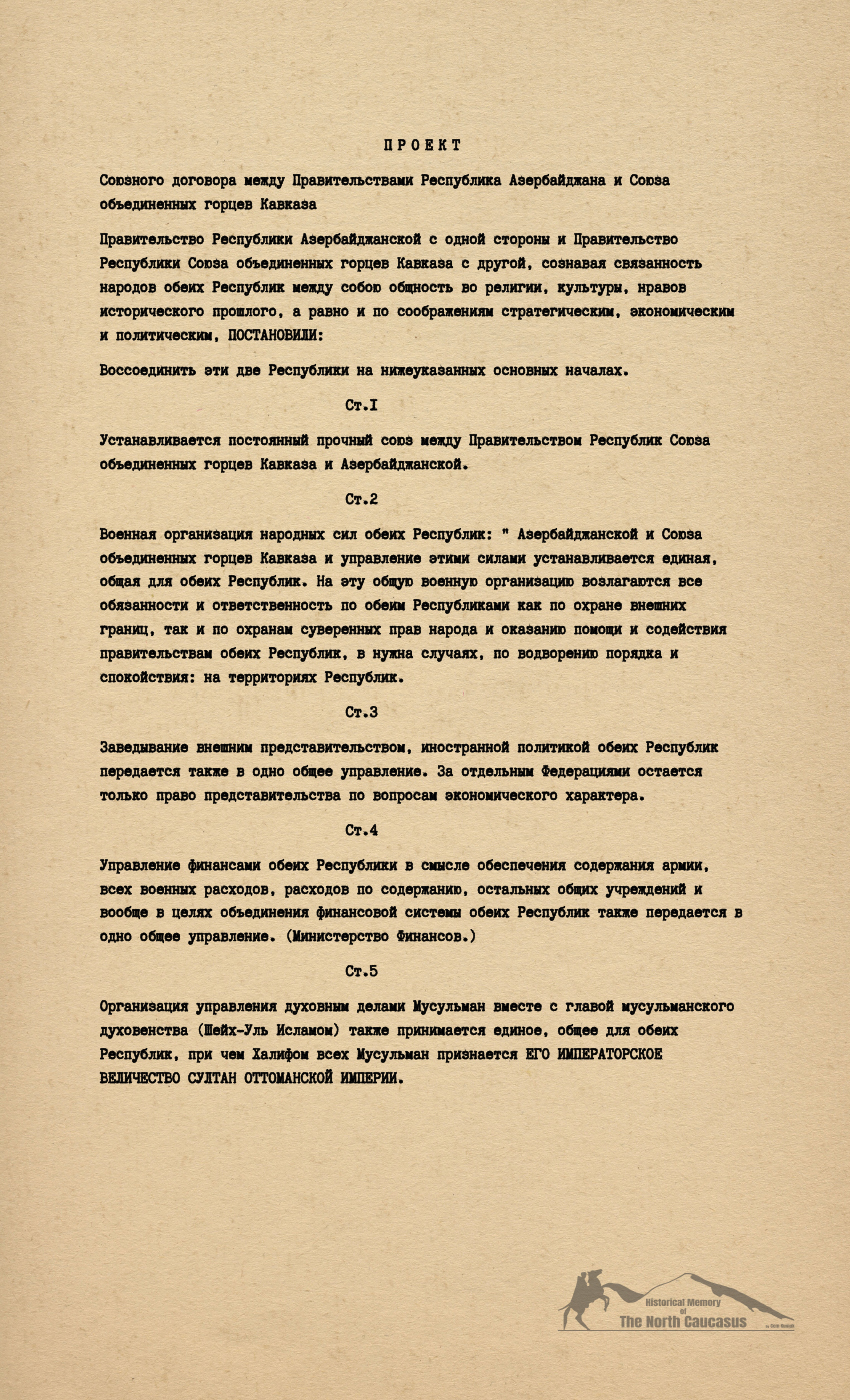
During the second half of 1919 and 1920, apart from the individual financial aid some Azerbaijani capital owners provided to the North Caucasus resistance, there was no concrete alliance project between the two states. The first concrete solidarity of these two groups emerged after their own countries were invaded by the Bolsheviks when the Bolsheviks entered Georgia at the beginning of 1921. When the Georgian Mensheviks had already left their country to the mercy of the Bolsheviks and started to leave the country with French ships from Poti, the last defense positions of Georgia were the detachments of the Mountain-Azerbaijani Defense Committee.
Cem Kumuk
Istanbul, 15 December 2023
